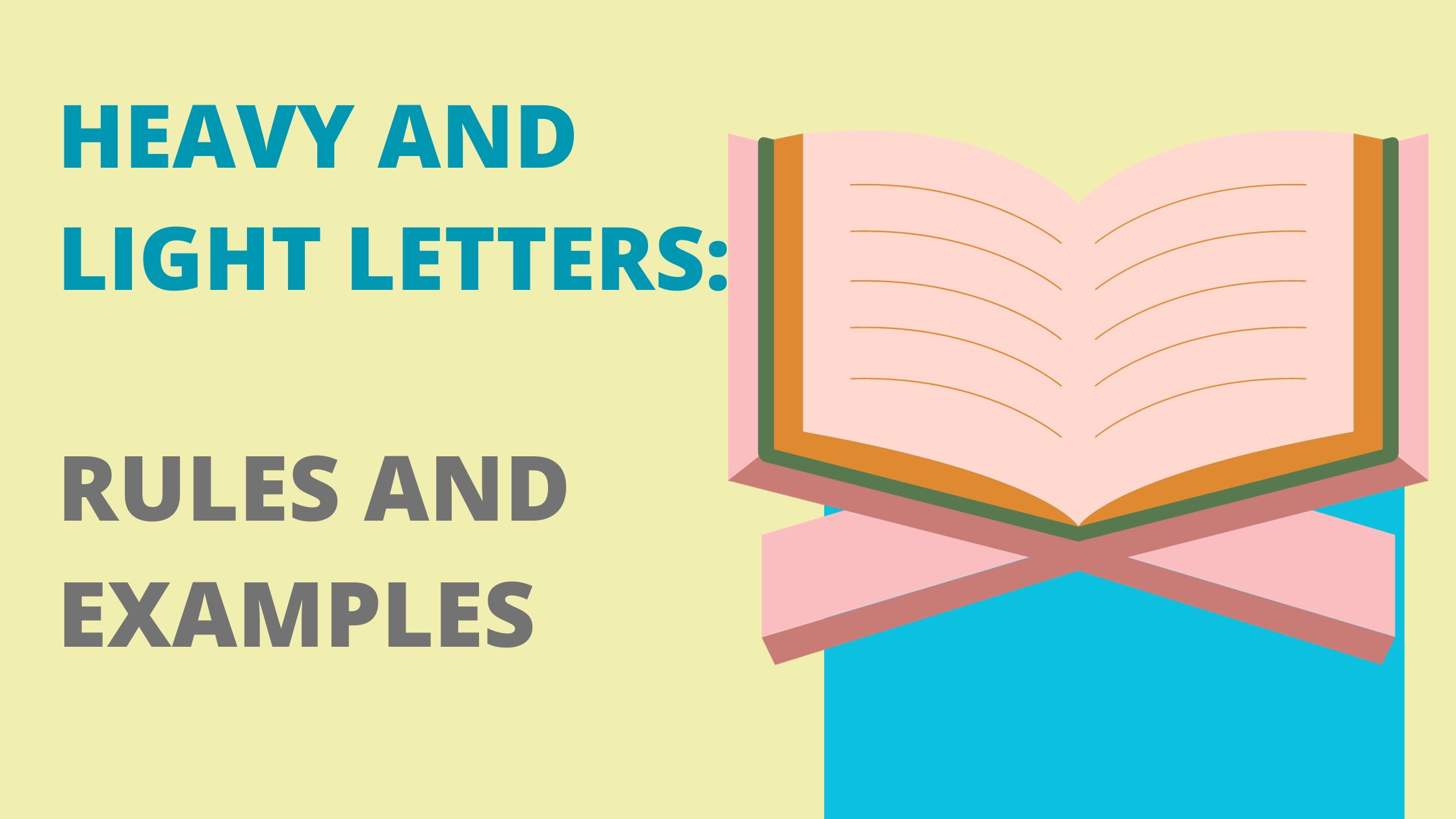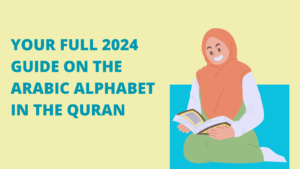In this blog post, we will delve into the intricacies of tafkheem and tarqeeq, exploring examples and highlighting key letters that fall under each category.
One essential component of Tajweed is understanding the rules of tafkheem and tarqeeq. These rules determine whether certain letters should be pronounced as heavy or light, adding depth and melody to the recitation.
Table of Contents
What Is Tafkheem in Tajweed?
In the field of Tajweed, Tafkheem refers to the significant concept of heaviness and thickening in pronunciation. It involves pronouncing a specific letter with strength and weight, resulting in a resonating sound that fills the mouth. Tafkheem is often used interchangeably with the term “thickening” since both convey the same meaning.
1. Tafkheem and the Mufakham Letters
Tafkheem specifically applies to a group of letters known as the Mufakham letters. These letters create a sense of weight and resonance when uttered, producing an echo or reverberation within the mouth.
As one recites words containing these letters, the pronounced sound carries a distinct heaviness, adding depth and impact to the pronunciation.
2. The Relationship Between Isti’laa and Tafkheem Letters
The heavy letters, also referred to as the letters of Isti’laa (rising up high), are intricately associated with Tafkheem.
These letters are articulated in a way that elevates the tongue, creating a gap between the lower part of the mouth and the roof, or soft palate.
This space facilitates the occurrence of reverberation and heaviness during the pronunciation. As a result, these heavy letters contribute to the overall effect of Tafkheem, enhancing the beauty and precision of recitation.
The 7 Heavy Letters in Tajweed (Tafkheem Letters)
In Tajweed, the rules governing the proper recitation of the Quran, seven letters always have Tafkheem. Tafkheem refers to the heaviness or fullness in the pronunciation of these particular letters. Mastering these letters is crucial for accurate Quran recitation.
1. The Tafkheem Letters
The seven Tafkheem letters are خ (Kha), غ (Ghayn), ص (Sad), ض (Dhaad), ط (Ta), ظ (Dha), and ق (Qaf). These letters are always considered heavy, regardless of their conditions or placement within a word. The Arabic abbreviation for these publications is (خص ضغط قظ).
2. Degree of Tafkheem
Although all seven letters have Tafkheem, they do not possess the same degree of heaviness. The strength or weakness of certain characteristics determines the level of Tafkheem for each letter.
3. Ranking of Strength
Among the Tafkheem letters, the ranking of their strength is as follows: ط (Ta) is the strongest, followed by ض (Dhaad), ص (Sad), ظ (Dha), ق (Qaf), غ (Ghayn), and خ (Kha). This ranking helps us understand the varying levels of heaviness in these letters.
4. Examples of Tafkheem Letters
To illustrate the usage of these Tafkheem letters, let’s consider a few examples. In the phrase “وَيُقِيمُونَ الصَّلاةَ” (wa yuqeemoona as-salaata), the letter ص (Sad) carries heaviness and should be pronounced with fullness.
Similarly, in the phrase “وَإِنَّ لِلَّذِينَ ظَلَمُوا عَذَابًا دُونَ ذَلِكَ” (wa inna lillatheena dhalamoo ‘athaban doona thalika), the letter ظ (Dha) demonstrates its heaviness in the word ظَلَمُوا (dhalamoo).
5. Importance of Tafkheem
Understanding and correctly pronouncing these seven heavy letters with Tafkheem is crucial for accurate Quran recitation and mastering Tajweed rules.
Proper pronunciation ensures that the intended meaning and message of the Quran are preserved and conveyed effectively.
Give your child the opportunity to excel in Quran recitation with our dedicated Tajweed teachers at At Bayan Al-Quran. Register now for our online Tajweed classes for kids!
Levels of Tafkheem in Tajweed
In Tajweed, the levels of Tafkheem, which refers to the thickness or fullness in the pronunciation of certain letters, can vary among different schools. While some schools state that there are three levels of Tafkheem, others suggest that there are five.
Here we will mention the school of five levels. These levels are listed in descending order as follows:
1. Heavy Letter with a Lengthened Alif (Alif Maddiyya)
The highest level of Tafkheem occurs when a heavy letter is followed by a lengthened Alif (Alif Maddiyya) with a Fatha on it, as seen in the word “خَالدين” (eternal).
2. Heavy Letter with a Fatha
In the second level, a heavy letter is pronounced with a Fatha, like in the word “قَتل” (killed).
3. Heavy Letter with a Damma
The third level involves pronouncing a heavy letter with a Damma, as heard in the word “غُلبت” (overpowered).
4. Heavy Letter with a Sukoon
In the fourth level, a heavy letter is followed by a Sukoon, as observed in the word “يُقتل” (is killed).
5. Heavy Letter with a Kasra
The fifth and final level is represented by a heavy letter followed by a Kasra, for example, in the word “طِباقا” (in layers).
The School has three levels, listed in descending order as follows:
1. Strongest Level
The strongest level of Tafkheem is when a letter with a ha-fat (ظَلَم) is pronounced, and if it is Sakin (silent), and the letter before it has a Fatha. An example is found in the word “يَغْلب” (overcome).
2. Level with a Dammah
This level involves a letter with a dammah (قُولوا), which is pronounced if it is Sakin, and the letter before it has a dammah. An example can be seen in the word “يُصرف” (is turned).
3. Level with a Kasrah
The third level is characterized by a letter with a kasrah ( طِبتم), which is pronounced if it is Sakin, and the letter before it has a kasrah. An illustration exists in the word “أِطعام” (feeding).
What is Tarqeeq in Tajweed?
Tarqeeq, in the context of Tajweed, refers to the thinning of certain letters during pronunciation. It is a technique used to achieve a state of thinness and lightness in the sound produced, ensuring that the mouth is not filled with the echo or reverberation of the letter being pronounced.
1. Linguistic Definition of Tarqeeq
Tarqeeq, derived from the Arabic word for “thinning,” refers to making something thin. In the context of Tajweed, it signifies the thinness and lightness attached to the letter when pronouncing it. This linguistic definition emphasizes reducing the thickness of the sound produced.
2. Application of Tarqeeq in Tajweed
When applied to Tajweed, Tarqeeq is a technique used to achieve a specific sound quality in the pronunciation of certain letters.
It involves maintaining a state of thinness and lightness to ensure that the mouth is not filled with the echo or reverberation of the letter. This technique enhances the clarity and precision of recitation.
3. Thinning of Muraqqaq Letters
Tarqeeq specifically refers to the thinning that occurs in the body of the Muraqqaq or light letters. These letters are characterized by their light sound quality, achieved by avoiding any echo or reverberation in the mouth while pronouncing them. The thinning technique helps to distinguish these letters and maintain their distinct sound.
4. Istifal Letters
The light letters, also known as the letters of ‘Istifal,’ are the ones that undergo Tarqeeq. The term ‘Istifal’ means ‘falling down,’ which represents how these letters are pronounced.
Unlike the Istila’ letters mentioned in Tafkheem, which require the tongue to rest at the top of the mouth, the Istifal letters allow the tongue to rest down at the bottom of the mouth without producing any echo. This positioning contributes to the thin and light sound quality associated with Tarqeeq.
Take your recitation skills to the next level by learning about Madd Leen and its effects on the pronunciation of Qur’anic letters.
The Light Letters in Tajweed (Tarqeeq Letters)
In Tajweed, the majority of the Arabic alphabet falls under the category of Tarqeeq letters. These letters are characterized by their light sound quality and are easier to identify by excluding the Tafkheem letters (ط – ض- ص – ظ – غ – خ) and the letters that can be either light or heavy (ر- ل – ا).
1. The Rule of Lightness
All the remaining Arabic letters always follow the Tarqeeq rules, meaning they should be pronounced with a light touch.
It is not permissible to pronounce them as heavy letters, except for three specific exceptions (ا – ل – ر). These exceptions will be illustrated through examples.
2. Examples of Tarqeeq Letters
- Taa (ت): An example of the Tarqeeq letter Taa ت can be found in the phrase “إِنَّهُ كَانَ تَوَّابًا” (Inna Hu Kaana Tawwaban).
- Seen (س): The letter Seen س is a Tarqeeq letter, as seen in the phrase “رَبِّ السَّمَاوَاتِ وَالأَرْضِ وَمَا بَيْنَهُمَا الرَّحْمَنِ” (Rabbi As-Samawati Wal-Ardi Wa Ma Baynahuma Ar-Rahman).
- Meem (م): The Tarqeeq letter Meem م can be found in the words “الرَّحْمَٰنُ عَلَّمَ الْقُرْآنَ” (Ar-Rahmanu ‘Allama Al-Qur’an).
Letters that Can be Heavy or Light
Some letters in the Arabic alphabet can have properties of both Tafkheem (heaviness) and Tarqeeq (lightness), depending on various factors. These factors include the Haraka (vowel) of the letter itself, as well as the letters that come before or after it.
The letters that can exhibit both Tafkheem and Tarqeeq are Raa (ر), Laam (ل), Alif Maddiyya (ا), and the Ghunna. The pronunciation of these letters can be influenced by the specific circumstances within a word or phrase, such as the presence of certain vowels or the surrounding consonants.
Start Your Child’s Quran Journey at Bayan Al-Quran: Enroll them in our Tajweed classes today!
Begin learning the Quran and Tajweed online for kids at Bayan Al-Quran Academy! We recognize the significance of establishing a solid foundation in Islamic education for children.
That’s why we provide comprehensive online courses that concentrate on teaching Tajweed, accurate pronunciation, and recitation of the Quran.
Enroll your child in Bayan Al-Quran Academy’s online program for expert instruction on proper recitation and understanding of the Quran from a young age.
Conclusion
It is important to understand the rules of Tajweed for heavy and light letters in order to properly recite the Quran. Tafkheem and Tarqeeq help us recognize strong and soft sounds.
Bayan Al-Quran provides comprehensive Tajweed classes for children to improve their recitation skills and strengthen their connection with Allah’s words.
Enroll your child today for a beautiful journey towards becoming proficient in reading the Quran.



















